The Independent's journalism is supported by our readers. When you purchase through links on our site, we may earn commission.
Escaping extortion, kidnap and gangs: the desperate plight of migrants at the US-Mexico border
Predictions of immediate chaos and catastrophe at the border did not materialise – at least, not in the way described or imagined, write Arelis R Hernandez and Danielle Villasana
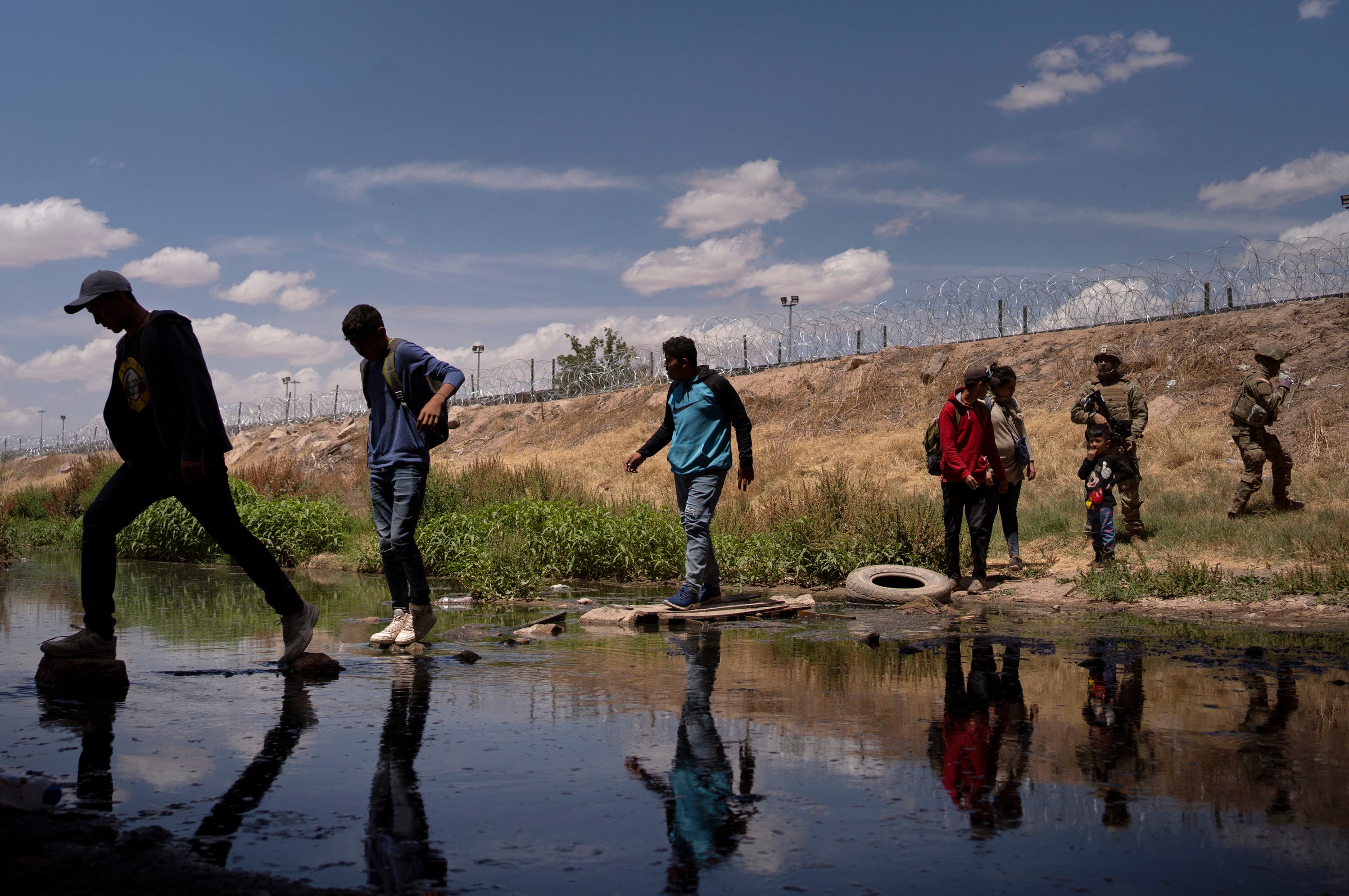
The night after the US pandemic-era expulsion order expired, the southwest border grew quiet. This was the perfect opportunity, Gerber Callejas reasoned, to grab his wife, young son and the few belongings they possessed after fleeing El Salvador and walk across the international bridge to ask for asylum.
Callejas had prayed for the end of Title 42 restrictions, which denied most migrants the opportunity to make claims for protection. He had tried to book an appointment with immigration officials through the new US Customs and Border Protection (CBP) app, but it repeatedly spat out error messages. For nearly six months, Callejas’s family had languished in Ciudad Juárez, Mexico, while waiting for a chance to enter the United States.
When the family reached the US entry point, officials prioritised the nearly 100 people in line with appointments. But the family was determined to wait. The night grew long and temperatures dipped. Mexican officials began urging them to leave. They refused.
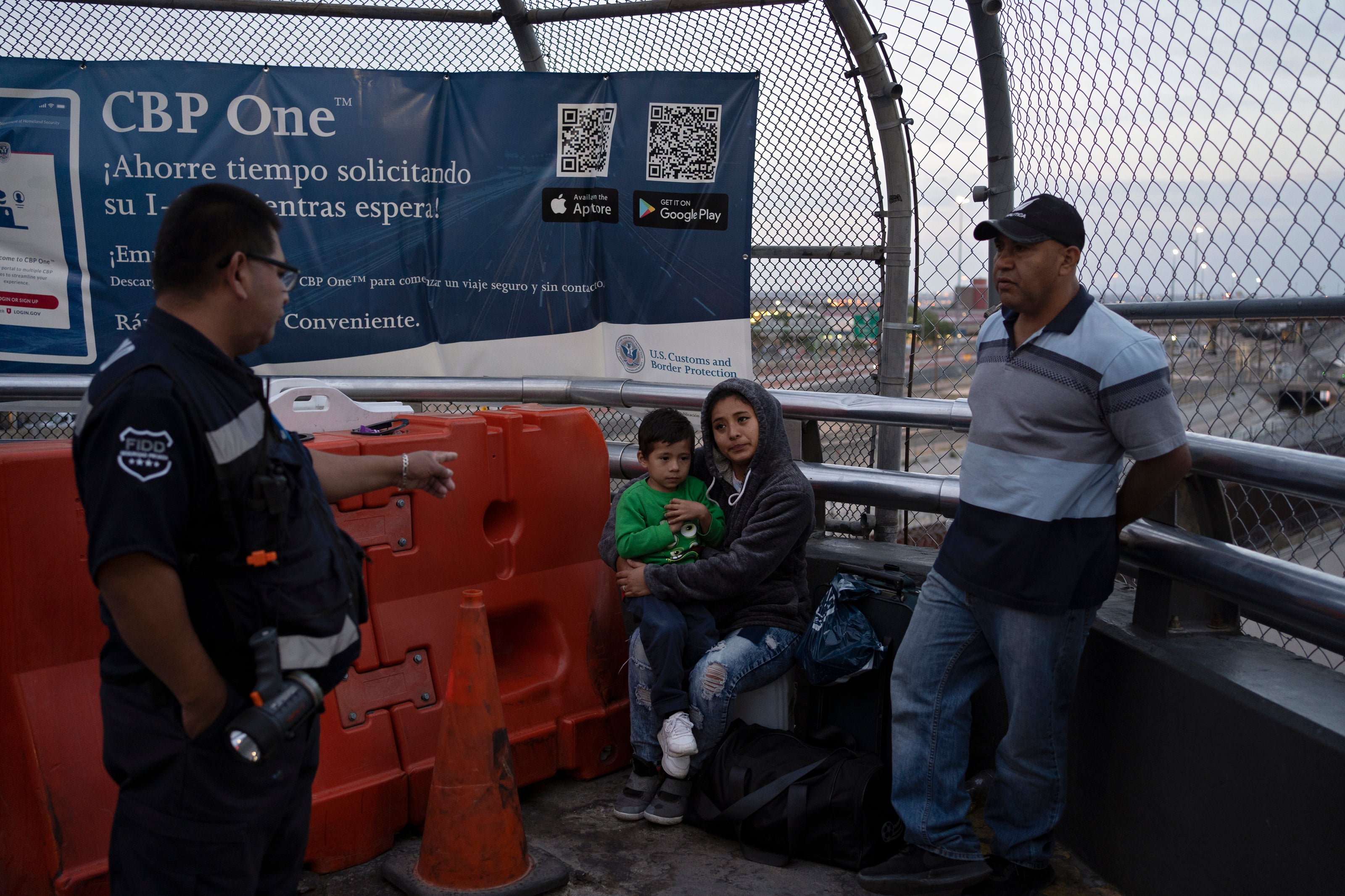
For Callejas, Juárez was a city every bit as dangerous as the homeland he left behind. In El Salvador, criminals had stalked and threatened him after demanding extortion fees he refused to pay, he said. In Mexico, his family had been kidnapped shortly after arriving at the border. They were freed after paying a ransom and were left on the streets, where they were routinely hungry, sick and without a roof over their heads.
As he waited in line now at the US border, he grew stressed, his heart pounding so anxiously in his chest that he thought he could feel his blood pulsing in his ears.
“I’m not asking for a gift,” he said. “I’m asking for protection.”
Callejas had studied US asylum policy on the way north and knew he had the right under federal law to ask for refuge. As the clock ticked to 10pm, Mexican officials approached.
He didn’t know whether they were coming to tell him to go away or if he could finally move forward.
The end of Title 42 pandemic restrictions at the border brought confusion, anxiety and fear that ultimately dissipated in a lull. The predictions of immediate chaos and catastrophe at the border in the US southwest did not materialise – at least, not in the way described or imagined.
Instead of a sustained uptick in detentions, the number of people caught crossing the border illegally has declined as migrants reassess how best to enter the United States. Although all can now apply for asylum, qualifying is difficult.
Migrants must vie for the 1,000 daily appointments available through CBP’s new app – a difficult feat for many without smartphones or strong internet connections. And at the US border, asylum seekers must demonstrate that they sought protection somewhere else if they passed through other countries on their way to the United States.
Meanwhile, the consequences for entering illegally are stiffer. Under Title 42, more than two million migrants apprehended at the border were returned to Mexico, but they could quickly reenter the US without risking a criminal penalty. Now, as before the pandemic, migrants deported after crossing the border face a five-year ban from entering the US again, with the possibility of jail time if they are caught doing so.
In cities such as Juárez, thousands of migrants are trying to determine what comes next. Some are trying to get appointments on the CBP app with middling success. Many said their preference is not to enter the United States illegally but to try to apply for asylum. But frustration is growing.
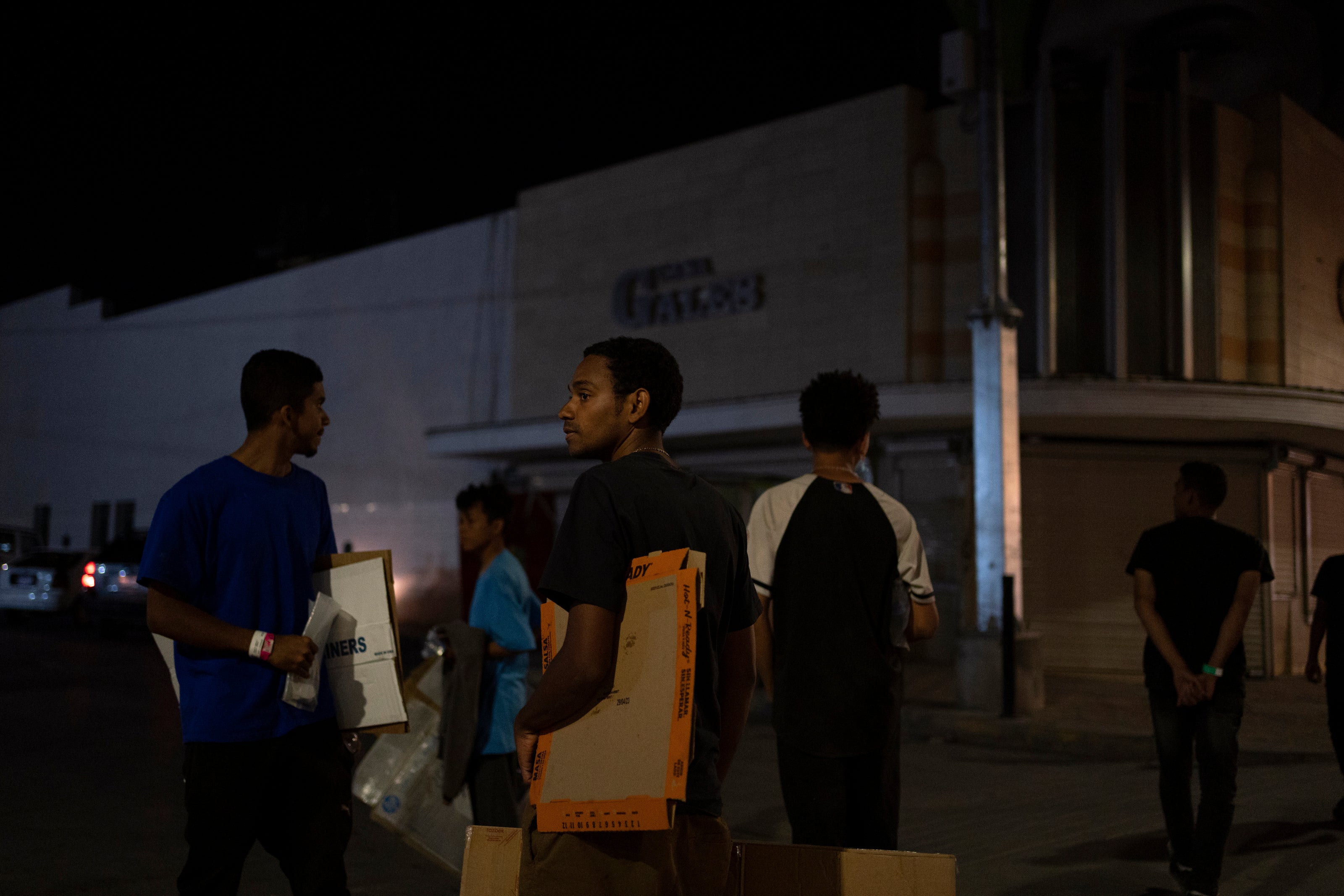
“Do they know what we had to do to get here?” Frainier Gonzalez, a 27-year-old Venezuelan, said on a recent afternoon. He had been expelled weeks earlier under the Title 42 restrictions and had not been able to get an appointment on the CBP app.
The number of migrants intercepted by US Border Patrol is down more than 70 per cent since the order expired, a Department of Homeland Security official said on Thursday. Officials say that at the same time, they have returned more than 10,000 migrants to their homes in Colombia, Ecuador, the Dominican Republic, Honduras and El Salvador on flights in recent weeks.
In April, the US Border Patrol released more than 60,000 people into the country to relieve dangerous crowding inside their facilities as border encounters spiked before the order’s lifting. The number has declined since the Title 42 measures ended. Since 11 May, more than 21,000 people have been allowed into the United States with orders to appear in court.
South of the border, confused migrants are languishing in shelters, sleeping on streets and going door to door among businesses asking for jobs, food and, sometimes, medicine.
Some are biding their time, knowing that conditions at the border evolve with each lawsuit that might challenge the US government’s efforts to deter unauthorised migration. Others are wondering how long they should wait.
“We’ve done everything they ask but still don’t meet the criteria,” Gonzalez said. “What is the criteria? The only thing left is to give up and go somewhere else.”
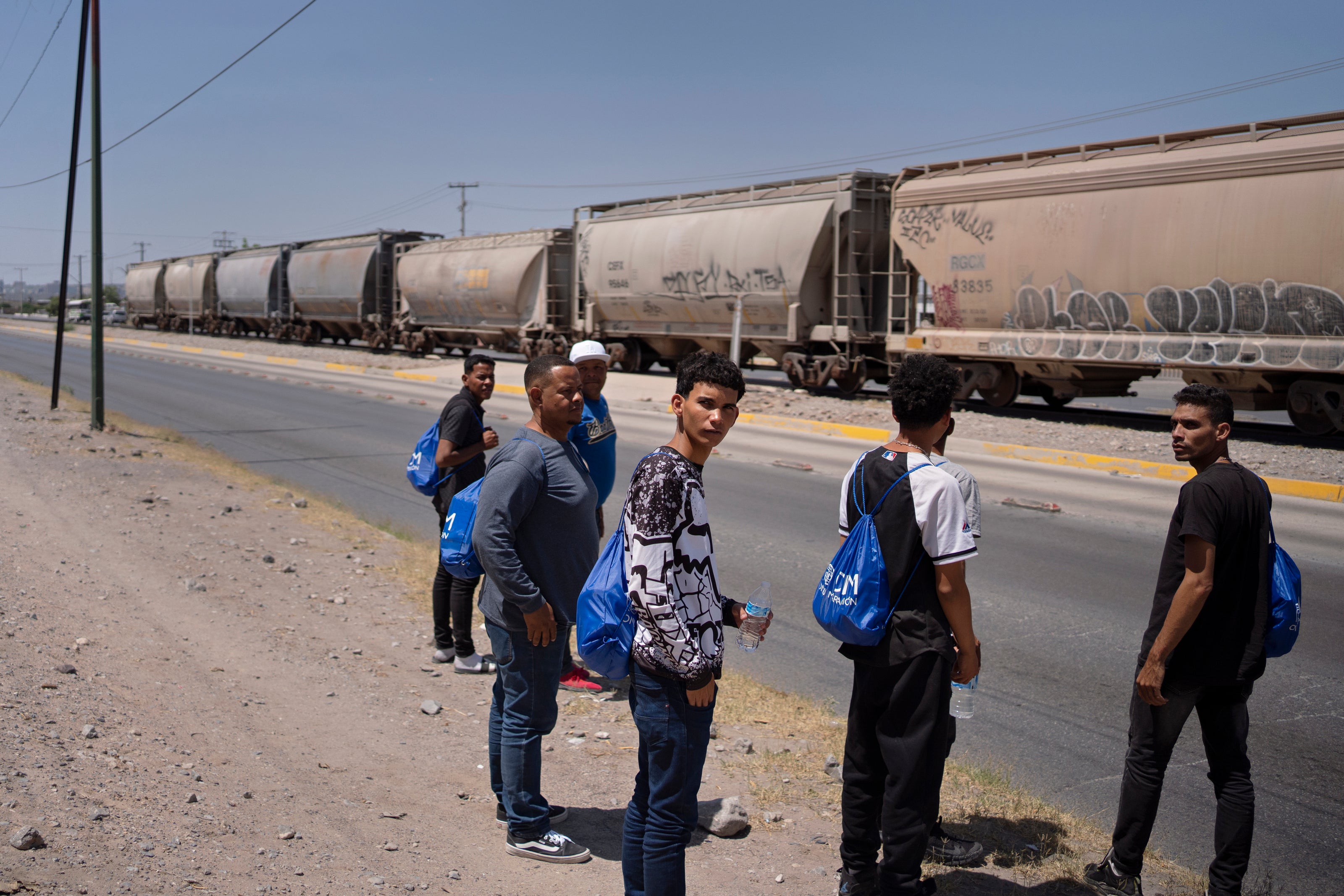
Ángel Andrade suspected that the end of Title 42 restrictions would bring new obstacles in his quest to enter the United States and begin a new life.
So, the skinny 32-year-old, whose friends call him “Flaco”, joined the crowds outside an El Paso border gate nine days in advance to surrender to US authorities, hoping to be let in.
He and his friends waited, sitting and sleeping in the dirt outside. A little more than a week later, US officials allowed them inside for processing, he said.
Andrade said he once led a comfortable life in oil-rich but struggling Venezuela, where he studied law and served in the military. But he said conflicts with relatives tied to criminal groups and deteriorating economic conditions pushed him to flee to Colombia. The pandemic and the election of a leftist president there, he said, made his adoptive home feel increasingly insecure.
He followed the advice of friends to brave the jungle route across the Darién Gap, travel through central America and work his way toward northern Mexico. He decided to try entering the United States through Juárez, just as the end of the public health order approached.
“Nos fuimos con la fe,” Andrade said. “We went with our faith.”
He and his friends were in CBP custody for two days, he said. They were asked a few questions and, eventually, the zip ties came out. Andrade said he encouraged his fellow migrants to stay hopeful, but a Colombian man burst into tears when they all saw the retrofitted white school bus.
At 9:59pm on 11 May – two hours before Title 42 restrictions were lifted – his group was returned to Mexico, the last batch expelled under the pandemic-era order, CBP officials said.
Andrade and his friends were crestfallen as they got off the bus back in Juárez. They looked for pieces of cardboard to sleep on that night. The next day in the city plaza, they attended a briefing by officials of the United Nations. The officials explained what had happened to them under US law and the options left for them to explore.
Under the order, Venezuelans such as Andrade had some advantages over other migrants. The United States rarely deports Venezuelans back to the South American nation, meaning that those caught entering illegally were usually removed to Mexico. Many also were granted exceptions to the Title 42 restrictions and allowed in.
After the restrictions ended, Venezuelans would face deportation to Mexico and all the legal ramifications that would bring, including the potential five-year ban on trying to reenter the United States.
“We inaugurated the new policies,” several of the men remarked at a shelter run by the Mexican government.
The men said they realise now that many of their assumptions about the border were based on bad information shared on social media and on the sunny anecdotes of friends and family members who had managed to cross weeks earlier and downplayed the difficulties.
Few of these new arrivals understood what to expect during credible fear interviews – which immigration officials use to determine whether asylum seekers meet the criteria to be allowed to remain in the United States while their requests are processed. Nor were they aware of the administration’s new rules to qualify for asylum.
All that Andrade and his friends know is that they are running out of places to turn.
“There aren’t many safe places left in Latin America,” said Edward Reyes, who met Andrade on the journey to the US border. “Things are falling apart.”
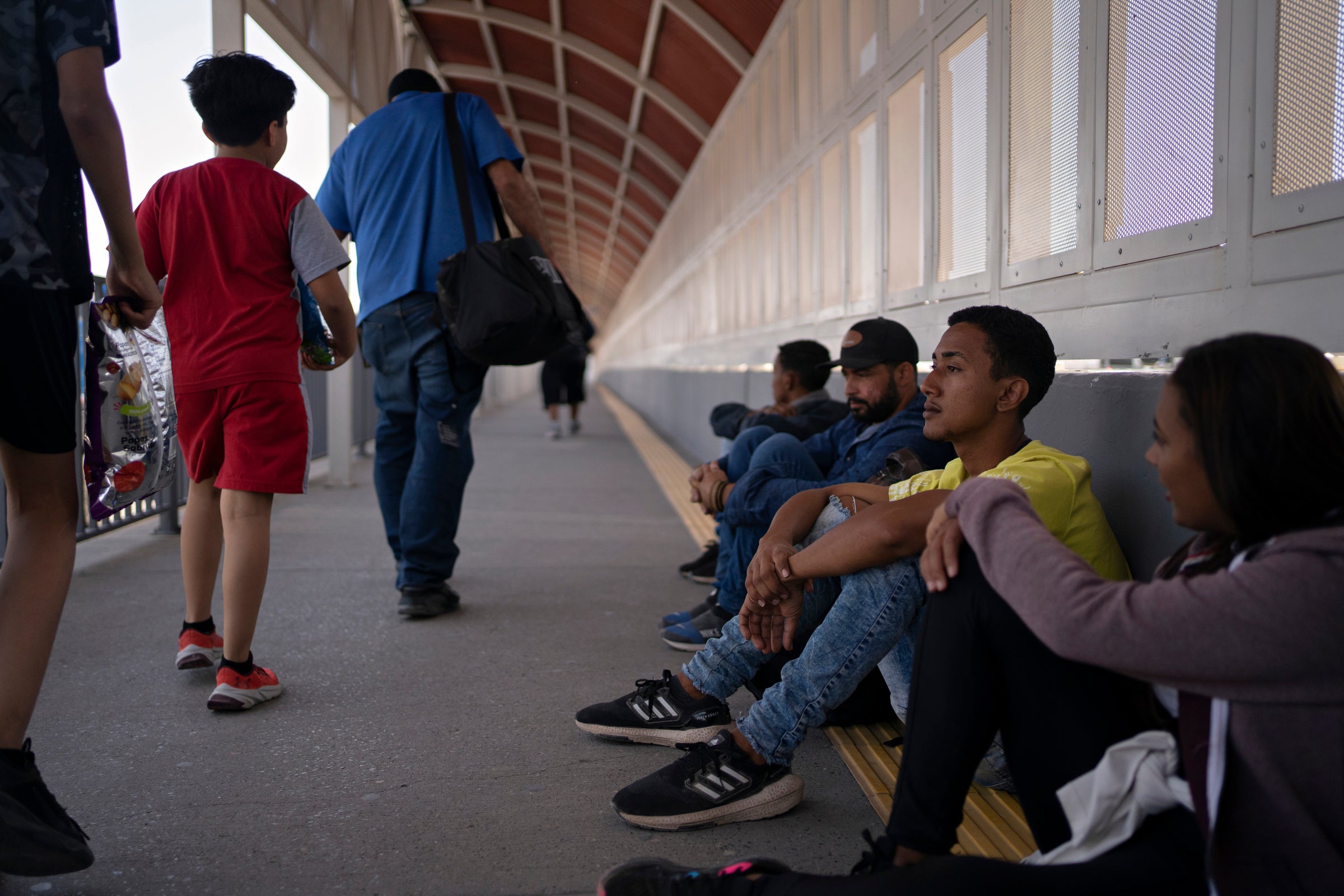
Around his friends, Andrade is the comic of the group. But after being bused back to Mexico, he said his spirit has been crushed. He popped his head into Mexican businesses in the plaza to plead for work and food. But it did not go well.
Soon, he was on his knees inside the cathedral in central Juárez to pray and cry.
“I don’t know what to do. Pero no aguanto mas,” he said through sobs. “I used to live well and come from a middle-class family where I had everything I needed. Now I need an opportunity and look at me: I look like a bum. People here look at me like I’m a drug addict. It enrages me.”
Leyla Bécquer said the harassment became too much for her in her native Iquitos, where she had a business on the edge of the Peruvian Amazon.
Constant threats and extortion by armed criminal gangs – and the persistent encouragement of a Venezuelan people smuggler – pushed her to book plane tickets for herself and her two sons to Mexico. She timed her trip to arrive before 11 May, after hearing advice from viral TikTok tutorials telling migrants that their window to cross would close soon.
The information was misleading, but Bécquer and thousands of other South Americans were lured by criminal organisations that used the end of the Title 42 restrictions to generate business.
On the flight to Juárez, Mexican soldiers boarded the plane and removed her and her two children, suspecting they were headed to the border. The interdiction was one of many ways that Mexican officials, at the request of the US government, stepped up enforcement in the days leading up to the expiration of the public health order.
But Bécquer said she wasn’t deterred. Instead, she took a flight to Mexico City and then two more that brought her closer to the border. At the final stop, the smuggler had arranged for a driver to pick her up and take her to the United States. In all, she had paid $4,500 (around £3,600) – most of the money she made from selling her business in Peru.
But the driver abandoned her family at the foot of the border wall, refusing to take them across after Title 42 rules ended, she said.
“I never imagined I would be in this position,” said Bécquer, 36, as she cried quietly, so as not to alarm her teenage son and sick toddler. She sat on a donated duvet clutching a small dinosaur book bag containing all the papers and reports she thought she would need as evidence for her asylum case.
For three days and nights, she moved from a waiting area near the Ysleta-Zaragoza port of entry to a nearby shopping centre and then slept in a patch of bushes next to the bridge. Bécquer did not feel safe sleeping outside but said she was turned away from a few hotels that refused to take children. Her youngest soon developed a fever. She begged pharmacies to give her medication until another migrant gave her cough syrup.
But the two-year-old’s illness grew worse. So she headed to the bridge without an appointment, hoping officials would nonetheless let them in on humanitarian grounds. They did. Her son was treated for pneumonia at a Texas hospital.
Now she hopes to find work, using her degree in digital communications.
“I am relieved,” she said, “but worried about my husband, who is on his way.”
In less than two months, she will face an immigration judge’s question about whether she sought asylum in any other country before resorting to the United States for help. A negative answer may mean she is deported to Peru.
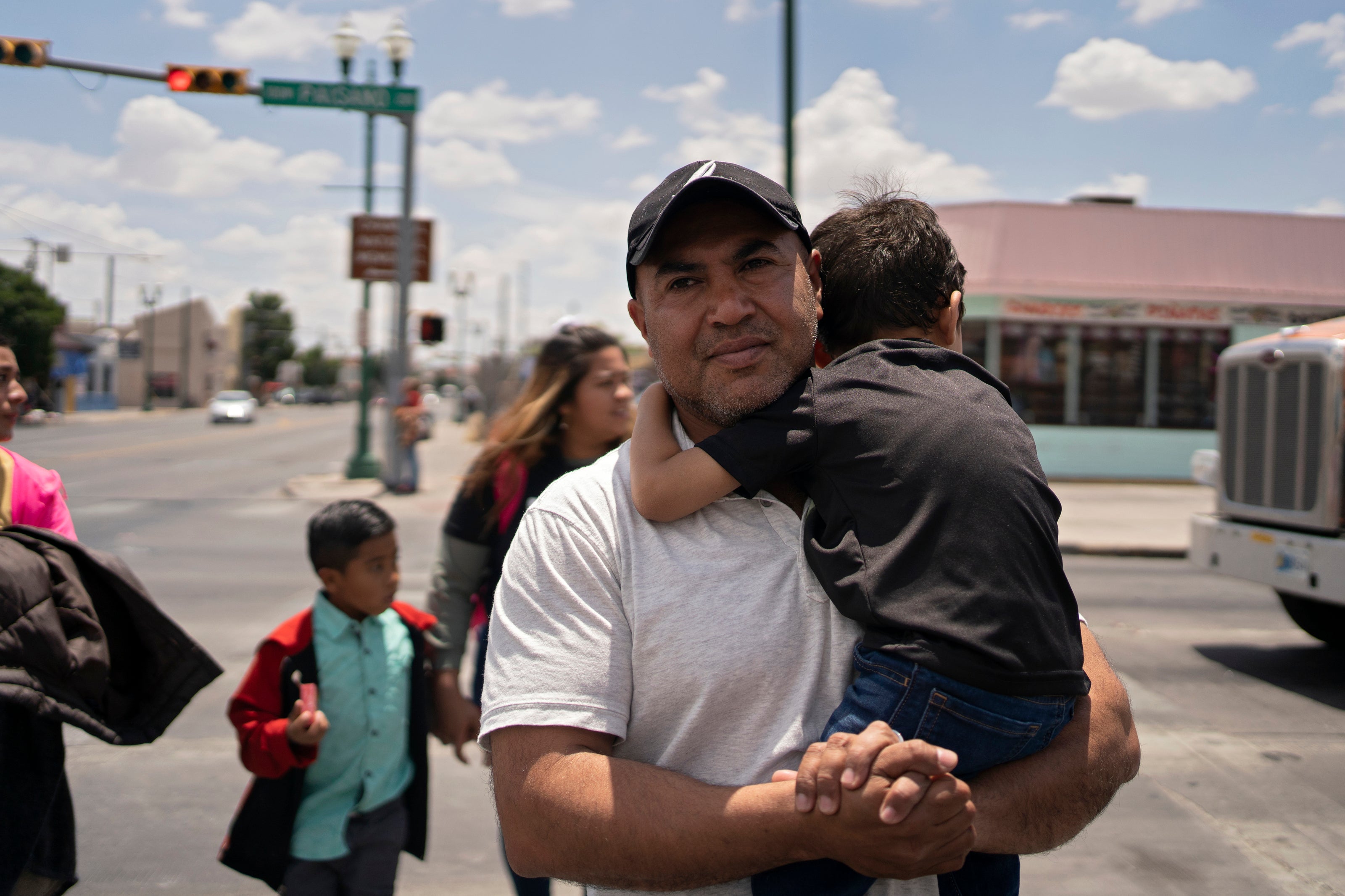
At the Paseo del Norte International Bridge near Juárez, Callejas saw Mexican security guards approaching and began pleading with a US port official. The official asked him to be patient and assured him his family would be received, he recalled.
They left at the urging of security guards but returned the next morning at 5am, he said.
A stroke of luck and Callejas’s strategic timing allowed them to pass. A Mexican official signalled to CBP officers that the family had been there the night before. The officer pointed to them and waved them through just after midday, two days after the Title 42 policy ended.
Callejas, who speaks some English, had waited and prepared for years for that moment. He told an asylum officer that he’d nearly been killed in a targeted attack that took the life of a friend instead. He said he became a marked man after filing a police report in 2015 about a crime he witnessed and had been moving around El Salvador every few months to evade government-abetted criminals who took over his gym business.
He showed screenshots of the CBP One error messages and the Mexican ID cards his family obtained to travel legally in the country.
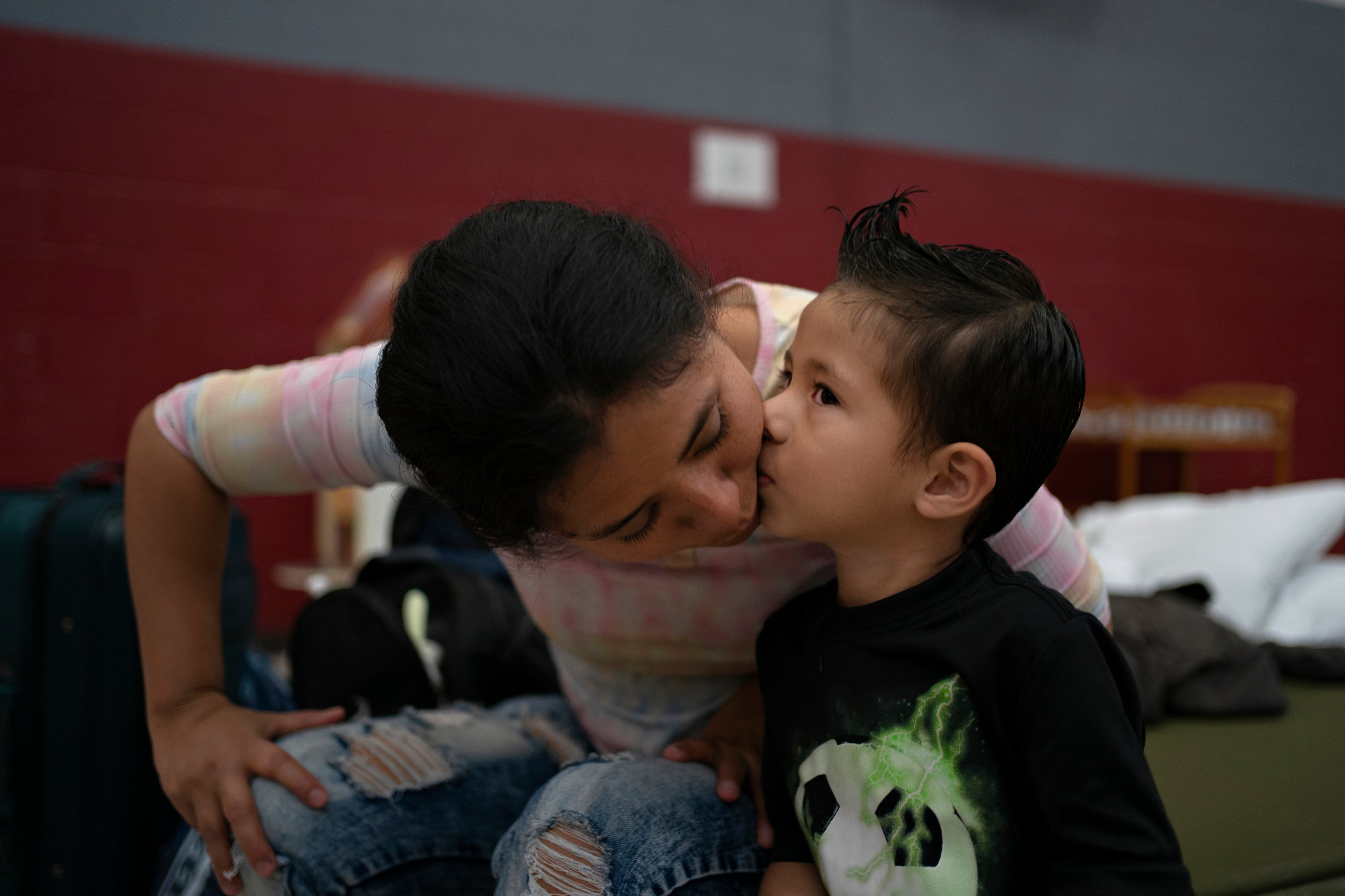
Less than two days later, Callejas and his family were in an El Paso church, savouring the moment. Callejas’s four-year-old son, Geordie, bounced around, talking rapidly in a high-pitched voice while playing on cots with other children. Callejas’s wife, Yaneth Callejas, was smiling. Callejas wore an ankle monitor given to migrants as an alternative to detention and to ensure that they attend their court hearings.
They are headed to Georgia to join friends. Yet, even though he has been allowed into the United States, winning asylum will not be easy.
Immigration court hearings are being set, according to at least three migrants who showed their documents to The Washington Post, within months – extraordinarily fast in comparison with the cases of migrants who arrived before 11 May and will not go before judges for years.
Advocates argue that migrants will not have access to good legal advice because there are not enough service providers who understand the new regulations.
Nonetheless, Callejas was about as giddy as his four-year-old as the family waited outside an El Paso bus station to head eastward. He talked fast, saying he understands that the United States is a country of law and order, which is why he is trying to do everything by the book.
He said he also knows nothing is guaranteed. But he could not help feeling confident about having come this far and passing the first test.
© The Washington Post
Subscribe to Independent Premium to bookmark this article
Want to bookmark your favourite articles and stories to read or reference later? Start your Independent Premium subscription today.






Join our commenting forum
Join thought-provoking conversations, follow other Independent readers and see their replies
Comments